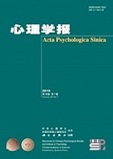|
|
CHARACTER ISTICS OF STRESS RESPONSE IN GYMNASTS
Tang Cimei,Zhang Kan,Xing Daigao,Lin Wenjuan,Sun Lihua,Zhao Huiling,George Singer,Waldemar Fibiger,Ding Xueqin Institute of Psychology, Academia Sinica Department of Psychology, La Trobe University, Australia Training Bureau, National Sports Committee of
1986, 18 (03):
79-88.
Physical and mental effort results in changes in urine catecholaminesecretions, heart rate, cardiac rhythm, respiration rate and level ofrespiratory integration, however little is known about individual differ-ences in these parameters resulting from subject's history. In the presentexperiment 12 gymnasts and 12 age-matched non-gymnasts were comparedon a task involving complicated discrimination reactions. The gymnastsshowed a small non-significant increase in urine CA concentrationswhereas the increase for the non-gymnasts was larger and significant.The differences in catecholamine concentrations for gymnasts andnon-gymnasts were significant. Data showed significant heart rate incre-ase, decreases in standard deviation of R-R interval in both groups.Heart rate of gymnasts was lower during rest and performance than in non-gymnasts, and standard deviation of R-R interval was higher ingymnasts which suggests that sinus arrhythmia in gymnasts was morepronounced than in non-gymnasts. Respiration rate increased significantlyin both groups during performance. The value of respiratory integration,as a parameter of relative ventilating flow, decreased significantly bothin gymnasts and non-gymnasts during performance. All of the values ofrespiratory integration in gymnasts were lower than that in non-gymn-asts during corresponding condition, but the difference between twogroups was not significant. These results suggest that some stress-inducedphysiological responses, such as urine CA secretion, heart rate, cardiacrhythm, relative respiratory ventilating flow etc. could be influenced bylongterm training and experience of stress.
Related Articles |
Metrics
|




